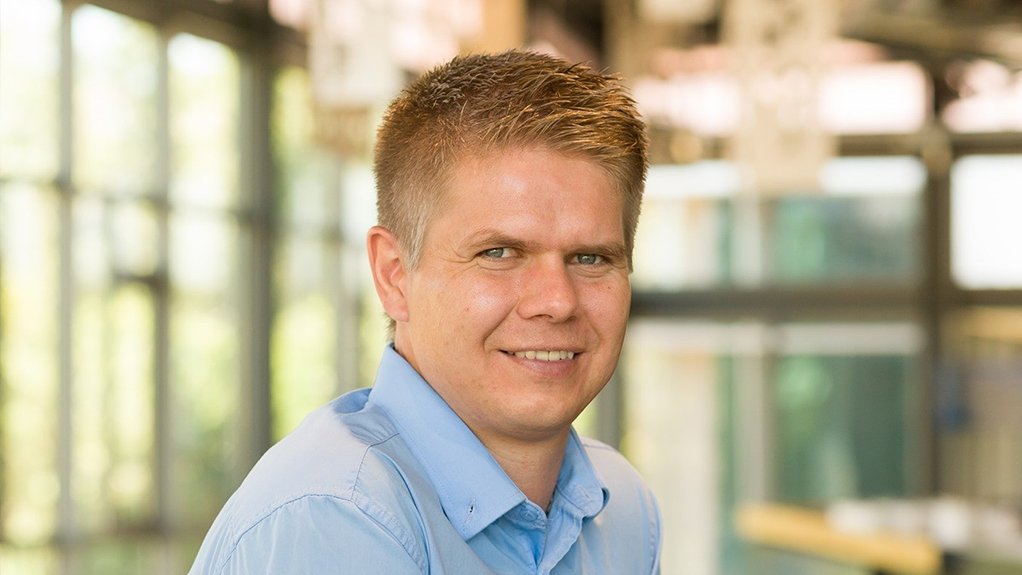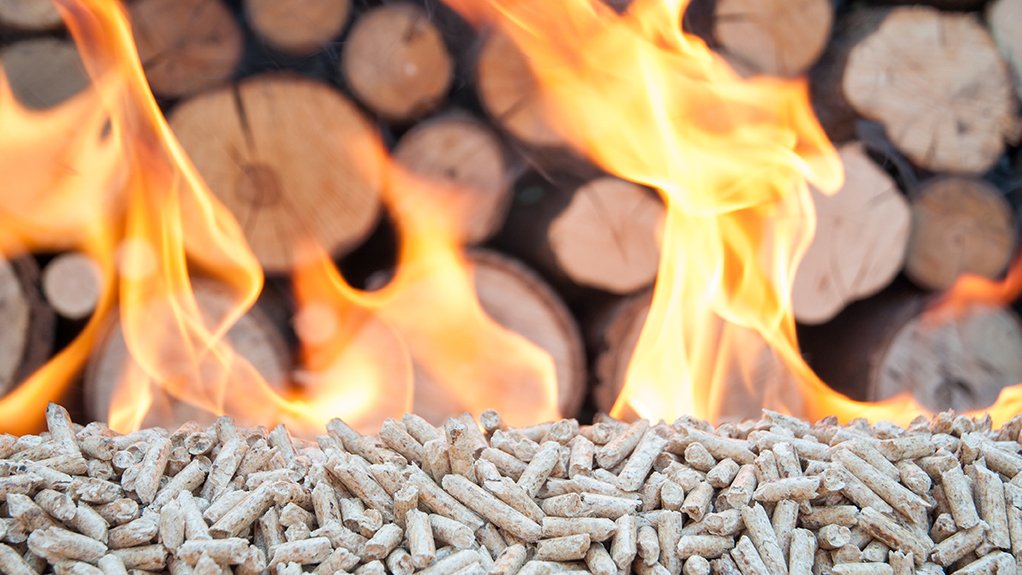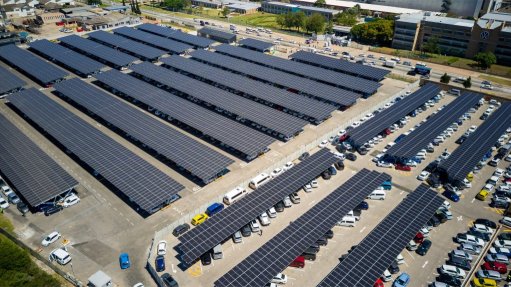Bioeconomy could support S Africa’s energy needs



SCHALK GROBBELAAR Bioenergy can be used as baseload power supply and is typically used in thermal power plants
KINDLING DEVELOPMENT The Department of Trade, Industry and Competition is running a working group for the promotion of timber construction to encourage investment in the mass timber manufacturing capacity
Amid unstable power supply, the development of a wood bioeconomy could help support South Africa's energy needs while ensuring that the country meets its carbon emission reduction targets, says University of Pretoria Graduate School of Technology Management senior lecturer Schalk Grobbelaar.
The country intends to limit greenhouse gas emissions tobetween 398 t of carbon dioxide equivalent (CO2-e) and 510 t CO2-e by 2025 and to between 350 t CO2-e and 420 t CO2-e by 2030.
“Bioenergy can be used as baseload power supply and is typically used in thermal power plants, offering similar flexibility in terms of minimum load and ramp rates, as well as startup and shutdown times, to coal-fired power plants. Assuming the biofuel is sourced from sustainably managed resources, the power generated is considered to be carbon neutral.”
These power plants can be constructed in 24 months to supply reliable electricity to the national grid, says Grobbelaar, adding that much of the resources required are located in areas where State-owned power utility Eskom has excess grid capacity.
Significantly, strides have been made in realising a wood bioeconomy in South Africa. A forest-products research strategy for two thematic areas has been submitted to the Department of Trade, Industry and Competition (DTIC), he highlights.
The strategy was submitted in March by the Stellenbosch University Department of Forest and Wood Science, and resource economics and related services provider Prime Africa Consultants.
A bioeconomy could address not only South Africa’s socioeconomic challenges but also assist in its transitioning from coal power.
“A wood bioeconomy will require the collection and processing of wood materials. Thus, it could create many jobs and small businesses,” states Grobbelaar, adding that, as mass timber is a value-added product, it will require the upskilling of workers.
To promote the development of a wood bioeconomy, government should reinclude biomass power plants in the country’s Integrated Resource Plan (IRP). Biomass was included in previous IRPs, but was omitted in the 2019 iteration.
“Thus, there are no government-run procurement programmes that include biomass as an option, consequently discouraging the development of projects inspired by the inclusion of biomass in the IRP as part of the Renewable Energy Independent Power Producer Procurement Programme projects, such as the Ngodwana energy biomass power plant at woodfibre raw material and end-use products manufacturer Sappi’s Ngodwana mill, in Mpumalanga,” emphasises Grobbelaar.
Sappi Southern Africa operates five mills that have a combined production capacity of 93 000 m3 of sawn timber, 690 000 t of paper, 624 000 t of paper pulp and over one-million tons of dissolving pulp a year.
Ngodwana Energy, a 25 MW biomass energy plant in which Sappi has a 30% stake, came on stream in March. The plant uses biomass recovered from surrounding plantations and screened waste material from the mill production process.
“Up to 35 t/h of biomass is burned in a boiler to generate steam and drive a turbine to generate electricity which is fed into the national grid,” states Sappi’s website.
The DTIC is running a working group for the promotion of timber construction to encourage investment in the mass timber manufacturing capacity needed to realise a wood bioeconomy.
“Increasing mass timber manufacturing capacity and consumption would most likely lead to increased volumes of available biomass for other applications,” explains Grobbelaar.
Increased mass timber production would also promote the manufacturing of biochar, a carbon-rich material that is a thermochemical decomposition of biomass.
Locally, biochar is produced from used timber by carbon-adsorption solutions and technologies specialist Adsorb Technologies, which has a joint venture with JSE-listed integrated forestry company York Timber Holdings’ subsidiary, biochar producer York Carbon, he says.
Adsorb offers two activated carbon products, SP500 and SP400, manufactured by the thermal activation of pine wood. Both products offer a high ratio of transport-to-adsorption pores, which delivers rapid adsorption kinetics, while the products’ large pore volume provides good adsorption capacity. SP500 and SP400 are suitable for use in agriculture, animal nutrition and wastewater treatment.
Biomass and biochar are typically produced from the wood that is not suitable for structural material, with much of the local wood that could be used in their production burned infield to prevent runaway fires during winter, advises Grobbelaar.
Article Enquiry
Email Article
Save Article
Feedback
To advertise email advertising@creamermedia.co.za or click here
Comments
Press Office
Announcements
What's On
Subscribe to improve your user experience...
Option 1 (equivalent of R125 a month):
Receive a weekly copy of Creamer Media's Engineering News & Mining Weekly magazine
(print copy for those in South Africa and e-magazine for those outside of South Africa)
Receive daily email newsletters
Access to full search results
Access archive of magazine back copies
Access to Projects in Progress
Access to ONE Research Report of your choice in PDF format
Option 2 (equivalent of R375 a month):
All benefits from Option 1
PLUS
Access to Creamer Media's Research Channel Africa for ALL Research Reports, in PDF format, on various industrial and mining sectors
including Electricity; Water; Energy Transition; Hydrogen; Roads, Rail and Ports; Coal; Gold; Platinum; Battery Metals; etc.
Already a subscriber?
Forgotten your password?
Receive weekly copy of Creamer Media's Engineering News & Mining Weekly magazine (print copy for those in South Africa and e-magazine for those outside of South Africa)
➕
Recieve daily email newsletters
➕
Access to full search results
➕
Access archive of magazine back copies
➕
Access to Projects in Progress
➕
Access to ONE Research Report of your choice in PDF format
RESEARCH CHANNEL AFRICA
R4500 (equivalent of R375 a month)
SUBSCRIBEAll benefits from Option 1
➕
Access to Creamer Media's Research Channel Africa for ALL Research Reports on various industrial and mining sectors, in PDF format, including on:
Electricity
➕
Water
➕
Energy Transition
➕
Hydrogen
➕
Roads, Rail and Ports
➕
Coal
➕
Gold
➕
Platinum
➕
Battery Metals
➕
etc.
Receive all benefits from Option 1 or Option 2 delivered to numerous people at your company
➕
Multiple User names and Passwords for simultaneous log-ins
➕
Intranet integration access to all in your organisation




















